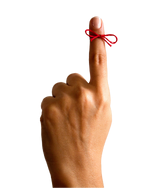Plusieurs éducateurs québécois ont collaboré à un ouvrage intitulé Usages créatifs du numérique pour l’apprentissage au 21e siècle, sous la direction de Margarida Romero.
Les 10 et 11 octobre dernier s’est tenu à l’Université du Québec à Montréal (UQAM) le colloque annuel de la CIRTA (Communauté pour l’Innovation et la Recherche sur les Technologies dans l’Enseignement/Apprentissage). Cette année, le colloque avait pour thème « Ouvrir les murs de la classe avec le numérique ».
Parmi les activités de cette conférence se trouvait le lancement de Usages créatifs du numérique pour l’apprentissage au XXIe siècle, un ouvrage collaboratif dirigé par Margarida Romero. Madame Romero est chercheure à l’Université Laval et directrice du Laboratoire d’Innovation et Numérique pour l’Éducation (#fabLINE) à l’ÉSPÉ de l’Université de Nice Sophia Antipolis.
L’ouvrage se divise en trois parties qui portent respectivement sur les thématiques suivantes :
- Éducation co-créative pour le 21e siècle ;
- Activités pour une éducation co-créative ;
- Innovation, compétences professionnelles et leadership.
Coup d’œil sur ce nouvel ouvrage
À travers une approche collaborative, l’ouvrage aborde en profondeur les particularités de l’apprentissage dans un monde de plus en plus complexe. Dans un premier temps, Margarida Romero et Benjamin Lille de l’Université Laval traitent de l’importance de la créativité, compétence qu’ils situent au cœur des apprentissages de groupe.
Pour ma part, j’ai particulièrement apprécié le quatrième chapitre de la première partie où les auteurs introduisent le terme inédit de la « créattitude ». Ce mot valise exprime parfaitement la valeur accordée à une attitude créative dans le modèle éducatif mis de l’avant par l’équipe #CoCreaTIC.
Dans la deuxième partie de l’ouvrage, la Québécoise d’adoption Stéphanie Netto propose, en collaboration avec Margarida Romero et Alexandre Lepage, un ensemble de conseils et de réflexions sur l’importance de l’apprentissage de la programmation créative.
On retrouve ensuite dans la troisième partie les écrits de Jacques Cool. Celui-ci supporte avec brio le dossier du développement des compétences professionnelles des enseignants. Dans cette partie, l’innovation est présentée comme une démarche d’amélioration continue.
Le dernier mot appartient finalement à Marc-André Girard qui traite de l’importance fondamentale du leadership dans un contexte de changement en milieu scolaire. Comment peut-on appliquer cette fameuse mentalité de croissance (Growth Mindset) au service du développement professionnel ? Marc-André aborde aussi le concept de tribu, qui apporte à chaque individu une certaine sécurité lors de cette démarche innovatrice pouvant parfois être anxiogène.
En somme, il s’agit d’un ouvrage complet, réalisé grâce à la participation collective d’une brochette d’éducateurs de diverses nationalités, parmi lesquels figurent plusieurs québécois.
SOURCE : Usages créatifs du numérique pour l’apprentissage au XXIe siècle. Sous la direction de Margarida Romero & AL (2017) Québec : Les Presses de l’Université du Québec, 186p.




 Recevez l'Info #DevProf et l'Hebdo pour ne rien manquer des nouveautés de l'École branchée!
Recevez l'Info #DevProf et l'Hebdo pour ne rien manquer des nouveautés de l'École branchée!




